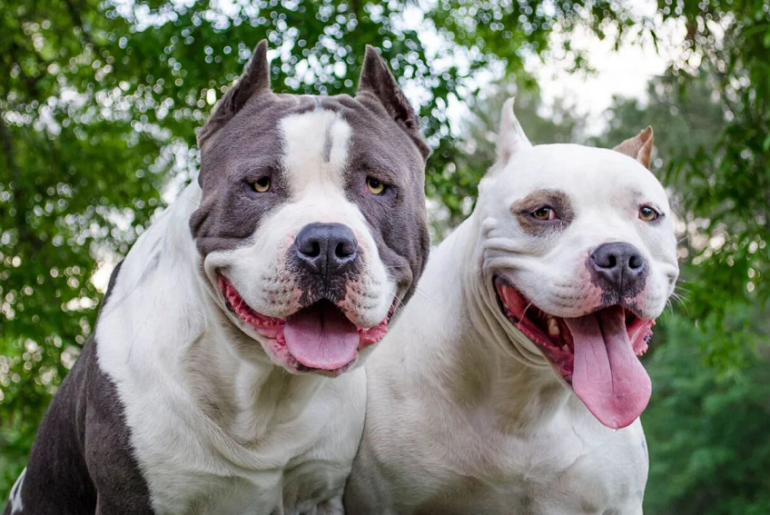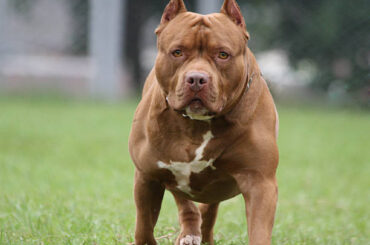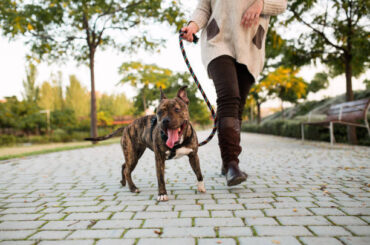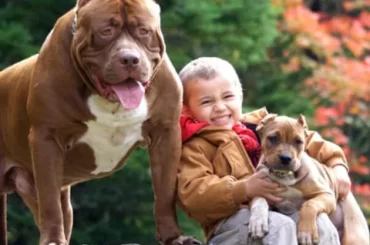Ultimate Guide on How to Breed Pitbulls
Welcome to our comprehensive guide on how to breed pitbulls. Whether you’re an experienced breeder or just starting out, this guide will equip you with the essential tips and best practices needed for successful pitbull breeding. We understand the importance of responsible breeding and the well-being of the breed, so let’s dive in and explore the fascinating world of pitbull breeding.
Key Takeaways:
- Learn essential tips and best practices for breeding pitbulls responsibly.
- Understand the breeding process and guidelines for responsible breeding.
- Prepare for breeding by ensuring the health and nutrition of both the male and female pitbulls.
- Select the right breeding pair based on pedigree analysis, temperament, and physical attributes.
- Discover the natural breeding process and alternative methods such as artificial insemination.
Understanding Pitbull Breeding
Before embarking on a pitbull breeding program, it’s crucial to understand the breeding process and the guidelines for responsible breeding. Proper knowledge and practices are essential for ensuring the health and well-being of the dogs and maintaining the integrity of the breed. In this section, we will explore key aspects of pitbull breeding, including estrus cycles, selection of suitable breeding pairs, and the significance of health testing and genetic screenings.
Estrus Cycles
Pitbulls, like any other dog breed, go through estrus cycles, commonly known as heat. Understanding these cycles is crucial for determining the optimal timing for breeding. During the heat cycle, female pitbulls become receptive to mating and can conceive. It’s essential to monitor the female’s behavior and physical signs to identify the most fertile period and plan breeding accordingly.
Selection of Suitable Breeding Pairs
Choosing the right breeding pair is key to producing healthy and well-balanced pitbull puppies. Factors to consider include temperament, physical attributes, and overall health. Breeding from genetically diverse and healthy dogs helps reduce the risk of inherited diseases and ensures the continuation of desirable traits within the breed.
Health Testing and Genetic Screenings
Prioritizing the health of the breeding pair is vital in responsible pitbull breeding. Conducting health tests and genetic screenings helps identify potential health issues and prevents the transmission of hereditary diseases to the offspring. Tests may include evaluations for hip dysplasia, cardiac conditions, and DNA tests for specific genetic disorders.
“Responsible pitbull breeding requires a comprehensive understanding of the breeding process and adherence to established guidelines. This not only promotes the health and well-being of the dogs involved but also contributes to the preservation of the breed’s characteristics and temperament.” – Dr. Samantha Johnson, Canine Geneticist
By comprehending the pitbull breeding process and following responsible guidelines, breeders can ensure the production of healthy, well-adjusted puppies and contribute to the betterment of the pitbull breed as a whole.
| Benefits of Understanding Pitbull Breeding | Benefits of Responsible Breeding |
|---|---|
| 1. Increased success rate in breeding | 1. Preservation of breed’s genetic integrity |
| 2. Reduced risk of health issues in puppies | 2. Mitigation of inherited genetic disorders |
| 3. Better selection of breeding pairs for desirable traits | 3. Promotion of responsible ownership through proper screening |
| 4. Higher chances of producing well-tempered puppies | 4. Contributing to the betterment of the pitbull breed |
Understanding the pitbull breeding process and committing to responsible breeding practices is crucial for any breeder seeking to produce healthy and high-quality pitbull puppies.
Preparing for Breeding
Proper preparation is the key to a successful breeding program. Breeding pitbulls responsibly requires careful attention to health and nutrition considerations, vaccinations, and conditioning for both the male and female dogs.
Health and Nutrition Considerations
Before breeding your pitbulls, it is essential to ensure that both dogs are in optimal health. Schedule a visit to the veterinarian to assess their overall well-being, including a thorough examination and any necessary vaccinations.
Tip: Maintain a balanced and nutritious diet for your dogs. High-quality dog food, rich in essential nutrients, will support their reproductive health and increase the chances of successful breeding.
Pre-Breeding Checklist
Prior to breeding, create a checklist to ensure that you have all the necessary items and information in place. This can include:
- Health records: Keep track of your dogs’ vaccination records, health tests, and genetic screenings.
- Mating calendar: Monitor your female pitbull’s estrus cycle to determine the ideal time for breeding.
- Breeding contracts: If you are working with another breeder or owner, establish clear agreements regarding stud fees, co-ownership, and puppy sales.
- Whelping supplies: Prepare a whelping kit with items such as clean towels, heating pads, puppy scales, and disinfectants.
Conditioning the Male and Female Pitbulls
Both the male and female pitbulls should be in optimal physical condition to ensure a successful breeding process. Regular exercise, mental stimulation, and socialization are essential to maintain their overall fitness and well-being.
Selecting Breeding Pair
When it comes to pitbull breeding, choosing the right breeding pair is a vital decision that requires careful consideration. The success of your breeding program hinges on finding the ideal male and female pitbulls that possess the desired traits, temperament, and genetic qualities. In this section, we’ll explore the best practices and essential tips for selecting the perfect breeding pair.
Analyzing Pedigree and Lineage
One of the primary considerations in choosing a breeding pair is analyzing their pedigree and lineage. A thorough pedigree analysis allows you to assess the genetic heritage of the pitbulls, taking into account their ancestry, championships, and notable bloodlines. Look for line-bred or inbred dogs with proven track records to increase the likelihood of producing offspring with consistent traits.
Evaluating Temperament and Personality
Temperament is a vital characteristic to consider when selecting a breeding pair. A well-tempered pitbull should exhibit qualities such as sociability, stability, and confidence. Assess the temperaments of both the male and female pitbulls to ensure they complement each other and are suitable for breeding. Temperament testing and observing their behavior in various environments can provide valuable insights into their suitability as breeding candidates.
Assessing Physical Attributes
In addition to pedigree and temperament, physical attributes play a crucial role in the selection process. Look for pitbulls that conform to the breed standard, with well-proportioned bodies, strong musculature, and appropriate height and weight. Evaluate their overall health, structure, and any specific traits that align with your breeding goals, such as head shape, coat color, or ear shape. Physical assessments should also include health screenings to rule out any hereditary conditions or genetic defects.
Remember, the goal of responsible pitbull breeding is not just to produce puppies, but to improve the breed’s overall quality, health, and temperament.
By carefully considering the pedigree analysis, temperament evaluation, and physical attributes, you can select a breeding pair that enhances the breed’s traits and produces offspring with the desired qualities. Diligence in this selection process is vital to achieving the best possible outcomes while prioritizing the well-being and preservation of the pitbull breed.
The Mating Process
Once you’ve selected the breeding pair, it’s time for the mating process. This section will guide you through the natural breeding process of pitbulls. It will also cover alternative methods such as artificial insemination.
Natural Breeding Process:
The natural breeding process involves allowing the male and female pitbulls to mate naturally. To ensure successful mating, it’s important to consider the following:
- Timing: Female pitbulls have a limited window of fertility called the estrus cycle. It’s crucial to monitor their cycle and identify the optimal time for mating, which typically occurs when the female is in heat.
- Introductions: Introduce the male and female pitbulls in a neutral and controlled environment, allowing them to familiarize themselves with each other.
- Supervision: Observe the mating process to ensure that it occurs safely and naturally. Avoid interrupting or interfering, as it can disrupt the breeding process.
Alternative Methods: Artificial Insemination
In some cases, artificial insemination may be used to breed pitbulls. This method allows for controlled breeding and can be beneficial when there are geographical limitations or specific health considerations. The process involves collecting semen from the male pitbull and injecting it into the female pitbull’s reproductive tract.
Benefits of Artificial Insemination:
- Allows for breeding between dogs that are geographically separated.
- Enables breeding with superior studs or proven sires, even if they are not available for natural mating.
- Minimizes the risk of transmission of certain diseases and genetic disorders.
It’s important to consult with a veterinarian or a reproductive specialist to determine the most suitable method for your specific breeding goals and circumstances.
| Method | Advantages | Disadvantages |
|---|---|---|
| Natural Breeding | – Allows for natural mating – Stimulates hormonal responses – Dogs may engage in natural breeding behaviors |
– Requires careful timing and supervision – Risk of injury or aggression between male and female pitbulls – Not suitable for long-distance breeding |
| Artificial Insemination | – Enables breeding with superior studs or proven sires – Minimizes the risk of disease transmission – Overcomes geographical limitations |
– Requires specialized equipment and expertise – Insemination success rates may vary – Additional costs associated with semen collection and storage |
Pregnancy and Whelping
Proper care during a pitbull’s pregnancy is crucial for the health and well-being of both the mother and her puppies. This section will guide you through the essential aspects of caring for a pregnant pitbull, from nutrition and exercise to monitoring and preparing for whelping. By following these pitbull breeding techniques, you can ensure a smooth and successful breeding experience.
Nutrition
During pregnancy, a pitbull requires a well-balanced and nutritious diet to support the growth and development of her puppies. Consult with your veterinarian to determine the appropriate diet and feeding schedule for your pregnant pitbull. It’s important to provide high-quality dog food that is rich in essential nutrients, such as proteins, fats, vitamins, and minerals. Additionally, ensure access to fresh water at all times.
Exercise and Monitoring
While exercise is important for maintaining overall health, it’s essential to strike the right balance during pregnancy. Provide your pregnant pitbull with regular exercise but avoid intense physical activities that may put stress on her body. Regular veterinary check-ups and ultrasounds can help monitor the progress of the pregnancy, ensuring that everything is progressing as expected.
Preparing for Whelping
As the due date approaches, it’s crucial to prepare a safe and comfortable space for whelping. Create a quiet and secluded area where the pregnant pitbull can give birth and care for her puppies without disturbances. Set up a whelping box lined with clean bedding to provide warmth and security. Keep essential supplies, such as clean towels, puppy scales, and a heating pad, nearby in case you need to assist during the whelping process.
Assisting with Labor
Most pitbulls are capable of giving birth without human intervention. However, complications can arise, and it’s essential to be prepared to assist if necessary. Familiarize yourself with the signs of labor, including restlessness, nesting behavior, and the onset of contractions. If the labor process seems prolonged or if the pitbull appears distressed, seek immediate veterinary assistance. Remember to remain calm and provide reassurance to the mother throughout the process.
Caring for Newborn Puppies
Once the pitbull gives birth, it’s crucial to provide proper care and attention to the newborn puppies. Allow the mother to bond with her puppies while ensuring a clean and warm environment. Make sure the puppies are nursing adequately and gaining weight. Monitor their health closely and consult with a veterinarian if you notice any concerns or abnormalities. Early socialization and handling can help them develop into well-adjusted and confident pitbull puppies.
Raising Pitbull Puppies
Once the puppies arrive, providing them with proper care and socialization is paramount. This stage of their development is crucial for their overall well-being. Here are some essential tips and pitbull breeding tips to help you ensure the health and happiness of your pitbull puppies:
- Nutrition: Proper nutrition is vital for the growth and development of pitbull puppies. Consult with your veterinarian to determine the appropriate diet for their specific needs.
- Vaccinations: Protecting pitbull puppies from potential illnesses is essential for their health. Follow a vaccination schedule recommended by your veterinarian to ensure they are adequately protected.
- Early Training: Start training pitbull puppies as early as possible to establish good behavior and obedience. Basic commands such as sit, stay, and come should be introduced gradually and reinforced consistently.
- Safe Environment: Create a safe and stimulating environment for pitbull puppies. Remove any potential hazards and provide plenty of toys and activities to keep them engaged and mentally stimulated.
- Socialization: Expose pitbull puppies to various people, animals, and environments to ensure they grow up to be well-adjusted and confident adults. Gradual exposure to different stimuli will help prevent fear and aggression issues.
Remember, raising pitbull puppies requires patience, consistency, and a commitment to their well-being. Provide them with love, care, and proper training, and you will have a happy and well-rounded companion for years to come.
Finding Suitable Homes for Pitbull Puppies
Responsible breeders understand the importance of finding loving and suitable homes for their pitbull puppies. It is a crucial step in the pitbull breeding process as it ensures the well-being and happiness of the puppies in their new environment. In this section, we will guide you through the process of screening potential owners, providing proper documentation, and offering ongoing support to new owners.
Screening Potential Owners
When searching for suitable homes for your pitbull puppies, it is vital to carefully screen potential owners to ensure they can provide a safe and nurturing environment for the puppies. Here are some key factors to consider during the screening process:
- Experience with pitbulls: Assess the potential owner’s knowledge and experience with pitbulls to ensure they understand the breed’s unique needs and characteristics.
- Living situation: Evaluate the living conditions of the potential owner, including whether they have a suitable home and a secure, fenced-in yard for the pitbull.
- Family dynamics: Consider the potential owner’s family dynamics, including the presence of young children or other pets, to determine if it is a harmonious environment for a pitbull puppy.
- Financial stability: Determine if the potential owner has the financial means to provide proper care, including food, veterinary expenses, and training.
Take the time to have open and honest conversations with potential owners to ensure their values align with your breeding goals and commitment to responsible pitbull ownership.
Proper Documentation
When placing your pitbull puppies into their new homes, it is essential to provide proper documentation to the new owners. This documentation serves as a record of the puppy’s lineage, vaccinations, and other important details. It includes:
- Puppy registration papers: Provide the new owners with the necessary registration papers to transfer ownership of the puppy.
- Health records: Share the puppy’s health records, including vaccination dates, deworming history, and any other relevant medical information.
- Pedigree information: Include the pedigree information of the puppy, demonstrating its lineage and ancestry.
- Contract and agreements: Have a clear and concise contract in place that outlines the responsibilities of both the breeder and the new owner, ensuring the welfare of the puppy.
By providing proper documentation, you establish transparency and credibility, giving the new owners confidence in their decision to adopt a pitbull puppy from your breeding program.
Ongoing Support for New Owners
Being a responsible breeder goes beyond just finding suitable homes for your pitbull puppies. It also involves providing ongoing support and guidance to the new owners as they navigate life with their new four-legged family member. Offer the following support to ensure a smooth transition:
- Informational resources: Provide new owners with educational materials, such as care guides, training tips, and recommended resources to help them raise a happy and healthy pitbull.
- Maintaining a relationship: Establish a rapport with the new owners and encourage open communication. Remain available to answer any questions they may have and address any concerns that arise.
- Community engagement: Encourage new owners to get involved in the pitbull community, whether it’s through training classes, socialization events, or breed-specific organizations. This will help them build a support network and ensure they stay connected with fellow pitbull enthusiasts.
By offering ongoing support, you demonstrate your commitment to the well-being of the puppies you’ve bred and the responsible ownership of pitbulls.
| Benefits of Finding Suitable Homes for Pitbull Puppies | Responsibilities of Breeders |
|---|---|
| 1. Happy and Healthy Puppies: Placing pitbull puppies in loving and suitable homes ensures their overall well-being and promotes their physical and emotional health. | 1. Screening Potential Owners: Responsible breeders diligently screen potential owners to ensure they can provide a safe and nurturing environment for the puppies. |
| 2. Preservation of the Breed: By finding suitable homes, breeders contribute to preserving the pitbull breed’s qualities and characteristics for future generations. | 2. Proper Documentation: Breeders provide new owners with the necessary documentation, including registration papers and health records, to establish transparency and credibility. |
| 3. Building a Strong Pitbull Community: Placing pitbull puppies with responsible and dedicated owners helps cultivate a supportive community of pitbull enthusiasts, sharing knowledge and experiences. | 3. Ongoing Support: Breeders offer ongoing support and guidance to new owners, providing them with educational resources and maintaining open communication. |
By diligently screening potential owners, providing proper documentation, and offering ongoing support, responsible pitbull breeders can ensure that their puppies find suitable, loving homes where they will thrive and contribute to the preservation of the breed.
Conclusion
Breeding pitbulls can be an incredibly fulfilling and rewarding experience, but it is not a task to be taken lightly. It requires a deep understanding of the breed, a commitment to responsible breeding practices, and a genuine love for these incredible dogs. By following the tips and best practices outlined in this comprehensive guide, you will be well-equipped to navigate the world of pitbull breeding and ensure the health and well-being of both the parent dogs and the puppies.
First and foremost, it is crucial to prioritize the well-being of your pitbulls throughout the breeding process. This includes selecting breeding pairs that are physically and mentally sound, ensuring that all necessary health tests and genetic screenings are conducted, and providing them with proper nutrition, exercise, and veterinary care. By making their health and happiness a top priority, you not only promote the overall welfare of the breed but also increase the likelihood of producing healthy and well-adjusted puppies.
Additionally, conscientious breeding practices involve finding suitable homes for the pitbull puppies you bring into the world. Take the time to carefully screen potential owners, ensuring they are knowledgeable and committed to providing a loving and nurturing environment for the puppies. Offer ongoing support and guidance to these new owners, as it is your responsibility to ensure that each puppy finds a safe and happy home where they can thrive.
By following these best practices, you contribute to the preservation of the pitbull breed and help to dispel any negative stereotypes associated with them. Remember, responsible pitbull breeding goes beyond simply producing puppies—it is about contributing positively to the breed and promoting its overall well-being.
FAQ
How do I breed pitbulls responsibly?
Breeding pitbulls responsibly involves thorough research, proper health testing, selecting suitable breeding pairs, ensuring proper nutrition and care during pregnancy, and finding suitable homes for the puppies. It’s essential to prioritize the health and well-being of the dogs and work towards preserving the quality of the breed.
What is the pitbull breeding process?
The pitbull breeding process begins with selecting a suitable male and female pitbull for breeding. They go through a mating process, either naturally or through artificial insemination. Once the female pitbull becomes pregnant, she undergoes proper care, nutrition, and monitoring until she gives birth to the pitbull puppies. The puppies are then raised, socialized, and placed in suitable homes.
What are some pitbull breeding tips?
Some pitbull breeding tips include selecting breeding pairs based on temperament, health, and physical attributes, ensuring proper health testing and genetic screenings, providing proper nutrition and care during pregnancy, creating a stimulating environment for the puppies, and finding suitable homes for them.
What are the best practices for pitbull breeding?
Best practices for pitbull breeding include conducting thorough pedigree analysis, evaluating temperament and health of the breeding pair, offering proper pre-breeding care and nutrition, maintaining a healthy and clean breeding environment, providing adequate prenatal and postnatal care to the pregnant pitbull and puppies, and screening potential owners to ensure the puppies find suitable homes.
What are some pitbull breeding techniques?
Pitbull breeding techniques include natural mating, where the male and female pitbulls are allowed to mate naturally, and artificial insemination, where the sperm is collected from the male and inserted into the female’s reproductive tract. Both techniques have their advantages and considerations, and it’s essential to choose the method that suits the specific situation.






